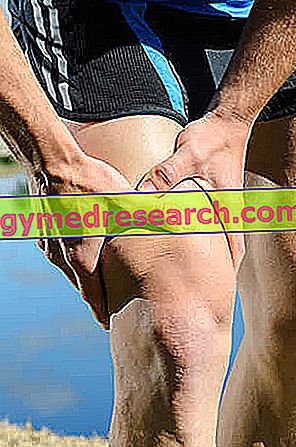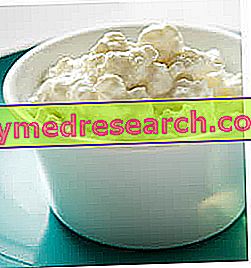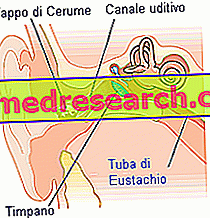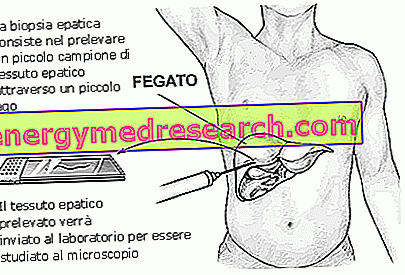DOMS stands for "Delayed Onset Muscle Soreness", which in Italian means "delayed onset muscle soreness".
This is the most widespread and less serious sporting "complication".

DOMS occur after any kind of motor activity, both aerobic and anaerobic.
They appear more easily after the stimulation of strength and hypertrophy (in all the relative variants), in particular when muscle exhaustion is reached.
DOMS should not be confused with immediate numbness and burning due to the accumulation of lactic acid or with pain caused by small contractures (also instantaneous but also lasting).
They are caused by microscopic lesions of muscle and connective tissue, which occur mainly during eccentric or isometric contraction. The nutritional status and the level of recovery (super compensation) are also affected.
The lesion of the acto-myosin bridges of the muscle cells frees some molecules (inflammation), which interact with the receptors of the peripheral nervous system activating the central response of the pain.
The DOMS appear after at least one day and can last up to over a week.
They are considered annoying and potentially disabling, which is why many prefer to avoid them with appropriate remedies.
What to do
Avoiding the onset of DOMS is not easy.
To tell the truth, it is not said that it is necessary; far from it.
For the uninitiated, hypertrophy muscle training (fundamental for volumetric growth) is based precisely on the application of a stress to which the body responds "adjusting and improving" the district concerned.
Avoiding DOMS could mean compromising the growth stimulus for the mass.
On the other hand, not all types of training are aimed at increasing muscle volumes; on the contrary, certain disciplines try to avoid it (especially those where weight gain is a limit).
The general tricks to limit the DOMS are:
- Perform a good muscular warm-up: the temperature of the muscles and the progressive activation limit the micro traumas. Aerobic activities are particularly indicated with wide movements, better if identical to the athletic gesture to be performed.
- Properly carry out the approach exercises (sometimes integrated in the preparatory technique): when working at high intensity thresholds, in addition to heating it is necessary to perform some "tests" of the gesture with important loads, few repetitions and a lot of recovery to avoid compromising the core training.
- Gradually increase the workload (intended as intensity + volume): as fatigue increases, DOMS also increase.
- Lower the speed of execution (not for all the activities): in the case in which overloads are used, beyond certain intensities it is not advisable to look for rapid movements. Increases the risk of uncontrolled executions and affects sensitivity.
- Control movements: for the same reason as above, imposing a rhythm and limiting joint movement can prevent "unscheduled" micro lacerations.
- Avoid the elastic articular rebounds: very harmful also from the point of view of injuries, micro traumas can only worsen.
- Calculate appropriately and recalculate periodically the recoveries between sessions: a muscle still fatigued, besides not reaching the intensity necessary for the training stimulus, does not have time to regenerate and accumulates more inflammation factors responsible for DOMS.
- Dealing with the most difficult techniques only when you are able to master them: it is very important to proceed with caution even in the choice of techniques. Not knowing them, it is common to underestimate the difficulty by increasing the risk of exceeding with fatigue.
- Only for those who work with weights, train with a partner: it improves intensity management and prevents the uncontrolled execution of the last repetitions.
- Perform a good aerobic cool-down: a blood-flushing of the tissues promotes the disposal of several molecules involved in inflammation.
- Some suggest stretching: there are no scientific bases that prove its effectiveness, especially when done before or immediately after the session.
- Feeding correctly: it favors the maintenance of a greater lucidity and therefore a greater control of the movements. Moreover, it prevents catabolism. Even dietary supplementation can help, as long as it starts earlier, continue during and after the training.
- Drink a lot: ensuring a good blood volume increases renal filtration and facilitates the disposal of the molecules responsible for DOMS.
- In severe cases, take medication.
What NOT to do
- Start training from cold and without practicing the approach exercises.
- Perform fast, poorly controlled executions, yielding in the phase of maximum closure or joint opening.
- Do not respect recovery periods, eat incorrectly or inadequately, perform advanced techniques without any "training seniority" and achieve high intensities / volumes without respecting the principle of progressiveness: they compromise super compensation and training progression.
- Only for those who work with weights, try exhaustion or forced protocols without a training partner.
- Skip aerobic regeneration.
- Practice intense stretching before training with cold muscles.
- Neglecting nutrition: it is not certain that it is necessary to integrate but it is certainly essential to eat correctly.
What to eat
There is no food that prevents DOMS.
Nutrients are all necessary, but some may be more relevant than others:
- Energy substrates; they serve to guarantee maximum performance in training and avoid premature exhaustion:
- Carbohydrates: in foods of vegetable origin: cereals, sweet fruit, potatoes, legumes and vegetables.
- Creatine: especially in meat.
- Branched amino acids (leucine, isoleucine and valine): especially in meat, in fishery products in cheeses and in eggs.
- Essential amino acids: necessary for the reconstruction of tissues damaged by DOMS. They are contained above all in high biological value proteins, both animal and vegetable. Meat, fishery products, eggs, milk and dairy products, soy, certain algae etc. The intake can be achieved by unifying plant and animal foods.
- Omega 3 fatty acids: have a potentially anti-inflammatory effect and could help reduce the effect of DOMS. They are mainly found in oily blue fish, certain algae and some oily seeds or related oils.
- Vitamin E: the reason is unclear (probably due to the antioxidant role), but a study has revealed that increasing the intake decreases the DOMS. The experiment should be repeated and confirmed. Vitamin E is contained in seed germs and in extraction oils.
- Other vitamins and mineral salts: all the vitamins, which act as precursors for certain enzymes, and the mineral salts essential to nerve transmission or muscle contraction must be present in the appropriate quantities.
What NOT to Eat
There are no foods not recommended for DOMS; it is recommended to prefer low-processed, partly raw foods, in order to guarantee the intake of easily thermolabile or soluble nutrients during cooking.
Natural Cures and Remedies
Some natural remedies for DOMS include:
- Massages: of dubious efficacy, they are used to mix extracellular fluids and to promote circulation. Moreover, they are intended to dissolve the most tense muscle bundles.
- Post-workout aerobic activity: in addition to the famous cool-down, some suggest doing it the next day to promote deep muscle washing and remove the molecules responsible for inflammation.
- Plants, roots, flowers, antioxidant medicinal spices; some examples are: turmeric, devil's claw, boswellia, garlic, chilli, ginger, green tea;
- Oils rich in omega 3: some examples are: walnut oil, hemp oil, wheat germ or linen or kiwi oil etc.
Pharmacological care
Pharmacological treatments for DOMS are few and not recommended.
In fact, it seems a contradiction to play sports and have to take pain medications.
The molecules that can help in supporting the "unscheduled" and debilitating DOMS are:
- Anti-inflammatories: mainly NSAIDs, therefore non-steroidal.
- Muscle relaxants: for example benzodiazepines, which, however, can also exert an effect on the central nervous system.
Prevention
The most effective preventive remedies are:
- Warm up and exhaust yourself thoroughly.
- Respect the principle of progression in the load.
- "Use your brain" and train without exaggerating, taking advantage of your past experiences without repeating the same mistakes.
- Respect the principle of super compensation: proportional recovery, adequate nutrition and hydration.
- If the DOMS appear after general training and compromise the specific one, reduce the intensity and volume of the responsible sessions.
Medical treatments
There are no known alternative medical treatments to use as remedies for DOMS.
The only one is the massage, which however is not a physiotherapy but a relaxing one. Recently the use of cryo-therapy (immersion in cold water tanks in post-training) has been proposed.



